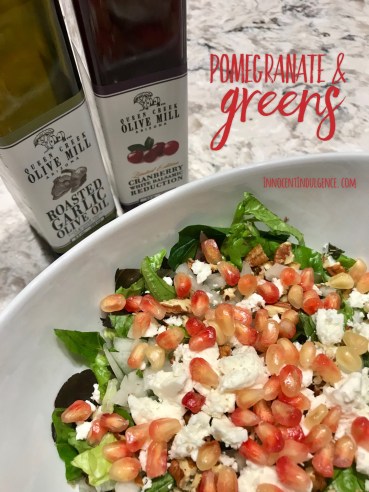‘Tis the season! Pumpkin Pancakes–great for cozy mornings…or comforting dinners! Perfectly spiced, naturally sweet to celebrate everyday or holidays. (All gluten free, refined sugar free, and dairy free too!)
 1 cup rolled oats
1 cup rolled oats
2 Tbsp flax seed
4 Tbsp gluten free flour
1⅛ cup unsweetened almond milk
½ cup pumpkin puree
1½ tsp cinnamon
1 tsp pumpkin pie spice
Pinch cloves
1 tbsp baking powder
1 tsp vanilla
1 Tbsp coconut oil
1 egg
¼ cup coconut sugar
¼ tsp sea salt
Stevia, if desired
Toppings: Chopped pecans and Maple syrup
- Process oats, flax seed and flour in food processor or blender to a fine powder.
- Add remaining ingredients to blender and process until well mixed. Sprinkle and mix in additional stevia for sweeter pancakes. Batter will be thick.
- Preheat a nonstick pan over low/medium heat. Once hot, add small amount of coconut oil and spread around hot pan.
- Make pancakes, scooping about ¼ cup batter on the pan for each one, flattening and spreading out batter as needed. Cook for 2-3 minutes or until nicely browned. Flip. Cook for another 2-3 minutes on the second side and until pancakes are not doughy.
- Top with chopped pecans and maple syrup (or try Maple Syrup made from xylitol if you’re carefully watching blood sugars).
Makes 10-12.
Freeze pancakes and reheat in the toaster for a quick, easy breakfast.
Check out the amazing benefits of pumpkin (beyond lattes and decor) and other pumpkin recipes.
Enjoy the beautiful, crisp season…and share the goodness!




 It’s the love affair that’s hooked us for life! This $7 billion per year US chocolate industry shows just how much we love our chocolate. In America, each of us eats about 10 pounds per year, but this is actually low compared to much of the world. The Swiss, renowned for their chocolates, eat nearly 20 pounds per person per year!
It’s the love affair that’s hooked us for life! This $7 billion per year US chocolate industry shows just how much we love our chocolate. In America, each of us eats about 10 pounds per year, but this is actually low compared to much of the world. The Swiss, renowned for their chocolates, eat nearly 20 pounds per person per year!



 My tree is still loaded, so I’m loving every minute of the extra-fresh, juicy, sweet oranges…and Vitamin C!
My tree is still loaded, so I’m loving every minute of the extra-fresh, juicy, sweet oranges…and Vitamin C!
 Chocolate. How do I love thee? Let me count the ways…
Chocolate. How do I love thee? Let me count the ways…


 What are a few of my favorite natural sweeteners?
What are a few of my favorite natural sweeteners?